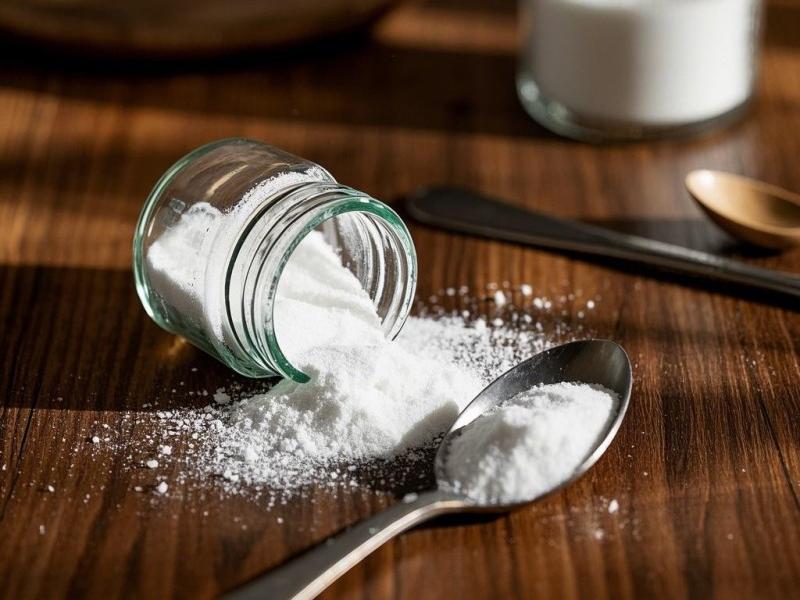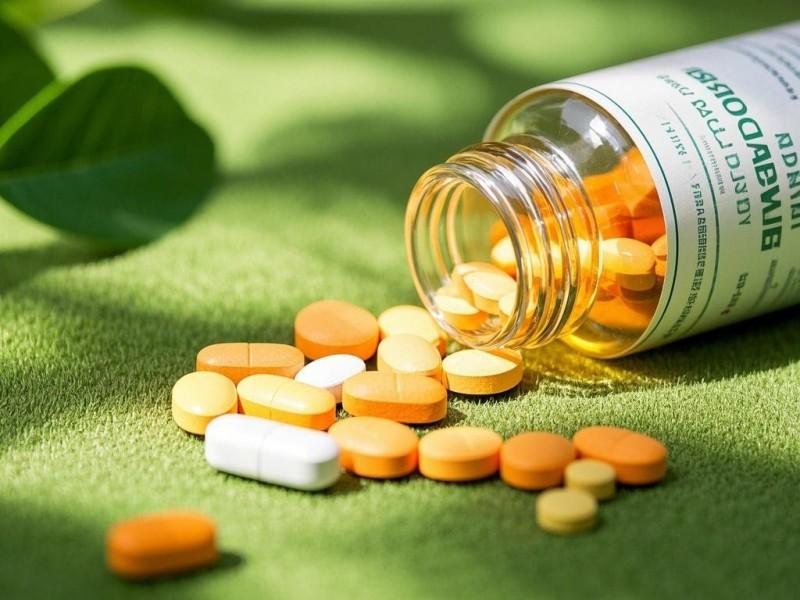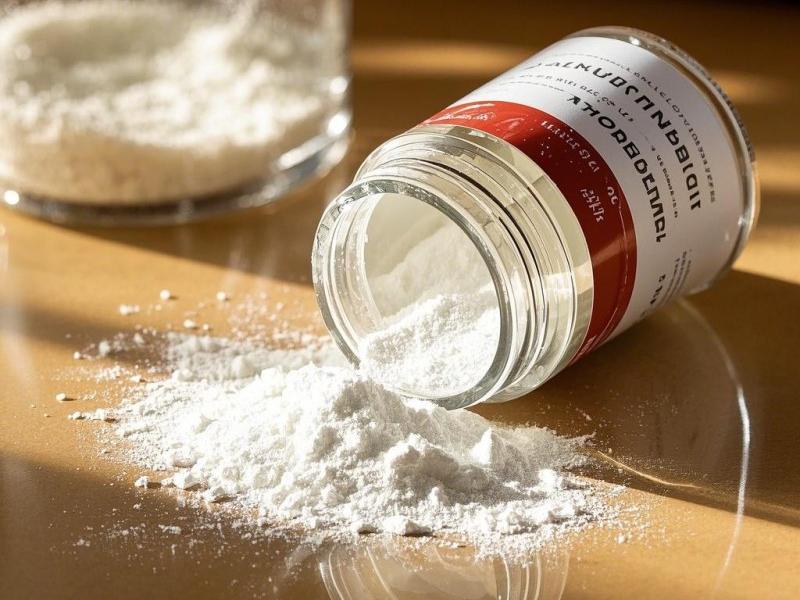Do You Need A List of Octacosanol Benefits?
Octacosanol is a monovalent high-grade saturated straight-chain fatty alcohol with anti-fatigue activity. It has been widely used in many industries such as food, pharmaceuticals, and daily chemicals. Recent studies have shown that octacosanol also has other important physiological functions, such as promoting metabolism, lowering blood sugar and lipids, regulating cardiovascular function, anti-inflammatory and anti-tumor.
1 Physical and chemical properties and distribution of octacosanol
Octacosanol is chemically known as n-octacosanol, also known as montanylalcohol or policosanol. It is a simple saturated straight-chain fatty alcohol with the molecular formula CH3(CH2)26CH2OH. Octacosanol is stable and not sensitive to light or heat. Octacosanol is insoluble in water, but soluble in hot ethanol, toluene, benzene and other organic solvents. It contains multiple hydrophilic hydroxyl groups and hydrophobic alkyl groups, and can undergo chemical reactions such as esterification, dehydration and hydroxylation, and halogenation. Octacosanol is highly safe. Acute toxicity tests have shown that the LD50 for rats is 18,000 mg/kg (oral), far exceeding that of table salt (LD50 = 3,000 mg/kg) [1], suggesting that octacosanol has no side effects as a pharmaceutical or food additive.
Octacosanol mainly exists in nature in the form of a wax ester. In China, taking into account factors such as the cost of raw materials and production technology, rice bran wax is a relatively ideal source of octacosanol. Rice is one of the staples with the largest output in China, with an annual output of nearly 200 million tons. At the same time, about 10 million tons of rice bran are produced as a by-product. Using rice bran as a source of octacosanol has very good economic benefits. In addition to rice bran, sugarcane wax, beeswax and shellac are also important natural sources of octacosanol. Recent reports have found that Antarctic krill is also rich in octacosanol, which adds a new option for the processing of octacosanol [2].
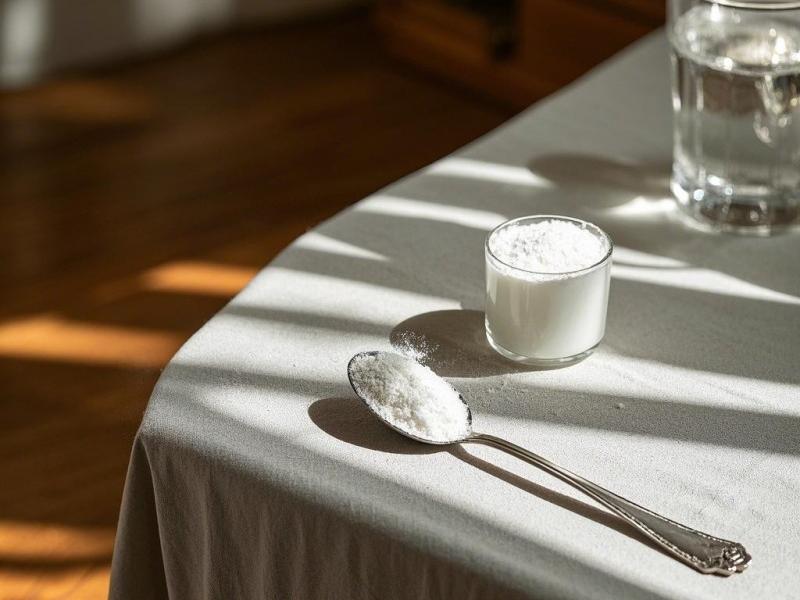
2 Physiological functions of octacosanol
Octacosanol was first discovered by the University of Illinois in the United States and is believed to have anti-fatigue properties. It has since been studied in greater depth by many scholars.
2.1 Enhances endurance and combats fatigue
Octacosanol is a typical anti-fatigue substance. Many studies have shown that octacosanol can increase the exercise tolerance of experimental animals and improve their relevant biochemical indicators after exercise, including the effects on serum urea nitrogen, toxic metabolites, liver glycogen, energy substances and other contents [3–7]. Octacosanol can prolong the swimming and climbing times of mice, enhance their endurance, lower serum lactate levels and serum urea nitrogen concentrations, and increase the level of glycogen accumulation in the body [8]. It also enhances the activity of phosphofructokinase (PFK), succinate dehydrogenase (SDH), coenzyme I – tetrazolium reductase (NADH–Tr), and myosin adenosine triphosphatase (ATPase) in cardiomyocytes and skeletal muscle cells [9]. Octacosanol preparations can also increase blood glucose and serum testosterone levels and prevent myocardial damage in rats with exercise-induced fatigue [10].
Compared with the exercise fatigue group, the time to exhaustion, serum superoxide dismutase (SOD) activity, calcitonin gene-related peptide (CGRP) and atrial natriuretic peptide (ANP) levels in the 28-alkyl alcohol preparation group were significantly increased or enhanced, while malondialdehyde (MDA) levels and plasma endothelin (ET) levels were reduced [11]. Octacosanol can also slow down the decrease in adrenal vitamin C levels and the increase in serum dopamine levels caused by stress, thereby inhibiting adrenal hyperactivity under stress [12]. This shows that octacosanol can also produce an anti-fatigue effect by regulating neuroendocrinology.

2.2 Hypoxia tolerance
Octacosanol can improve the body's tolerance to hypoxia. In an animal normobaric closed hypoxia test, octacosanol significantly improved the tolerance of the test rats to cerebral ischemia and hypoxia, reduced mild dilation of the blood vessels in the heart and brain tissues and the degree of cell edema, and had a certain protective effect on the structure of tissue cells [13–14]. Human trials have shown that octacosanol can enhance human high-altitude work capacity and reduce the polycythemia caused by high-altitude hypoxia. Other studies have shown that octacosanol can reduce red blood cell volume, increase hemoglobin concentration in red blood cells, reduce blood viscosity, and improve microcirculation. It can also improve myocardial function in rats with chronic hypoxia by increasing the oxidative respiratory efficiency of myocardial mitochondria and adenosine triphosphate (ATP) synthesis rate [15].
2.3 Antioxidant effect
Octacosanol can effectively protect myocardial mitochondria and prevent myocardial damage. Studies have found that octacosanol can improve the exercise capacity of rats, regulate myocardial endocrine function, reduce the content of MDA in the mitochondria of rat hearts during exhaustive exercise [8], and maintain or increase the activity of antioxidant enzymes such as SOD and glutathione peroxidase (GSH–Px). Exhaustive exercise produces excessive free radicals that damage cardiomyocytes. Octacosanol can reduce the damage to cardiomyocyte mitochondria caused by free radicals by reducing lipid peroxidation, protecting the structure and function of cell membranes, and protecting the heart [16].
2.4 Regulating energy metabolism
Octacosanol can regulate the metabolism of many energy-related substances in the body. Supplementation with octacosanol can effectively increase the mRNA content of glucose transporters (GLUT–4), G proteins, signal transduction and RNA activated protein (StAR), AMP-dependent protein kinase (AMPK), etc. in the liver tissue, heart muscle and skeletal muscle of test rats and other muscle tissue cells, significantly enhancing the activity of PFK, SDH, NADH–Tr and ATPase. resulting in an increase in the synthesis of various enzymes involved in energy metabolism in the body, and ultimately enhancing the body's energy metabolism, physical strength and endurance [7, 17].
2.5 Lowering blood lipids and cholesterol
Octacosanol can significantly lower the concentrations of lactate, triglycerides (TG), total cholesterol (TC), and low-density lipoprotein cholesterol (LDL-C) in the blood of test animals, and increase the levels of blood creatinine, blood sugar, lactate dehydrogenase (LDH), and high-density lipoprotein cholesterol (HDL–C). 3-Hydroxy-3-methylglutaryl-coenzyme A (HMG-CoA) reductase is closely related to cholesterol synthesis. Trityramine and behenyl alcohol, which are extracted from beeswax, can significantly promote the degradation of HMG–CoA in human liver cancer cells (HepG2) [18–19] and inhibit its synthesis. Pristanol (the main component is octacosanol) can induce the phosphorylation of calcium ion/calmodulin-dependent protein kinase (CaMKK), AMPK, HMG–CoA, etc., thereby inhibiting the activity of HMG–CoA reductase and reducing its mRNA expression in human umbilical vein endothelial cells (HUVEC) and liver cancer cells [20–21]. A trial involving 118 volunteers showed that after consumption of octacosanol, the average serum TC and TG levels were significantly reduced [22]. A trial involving 40 adolescents with hereditary hypercholesterolemia found that after consuming a diet containing a polyol formula, TG, LDL-C, and apolipoprotein B (ApoB) were significantly reduced [23].
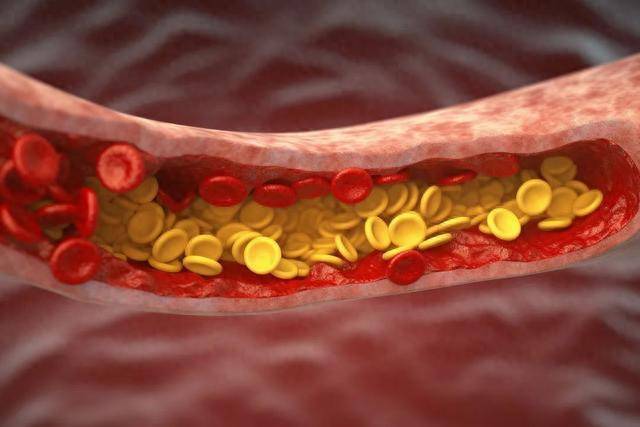
Recently, researchers have discovered that a nutraceutical mix containing prilol, Armolipid Plus, can lower blood pressure and blood lipids, reduce TC and LDL-C concentrations, promote glucose metabolism, and lower ApoB/ApoA1, among other effects, without significant side effects [24–26]. Puerarin can inhibit the function of cholesterol ester transfer protein (CETP) in zebrafish with high blood lipids, increase high-density lipoprotein, reduce the level of TC in the body, improve the symptoms of fatty liver, and improve the proliferation of microglial cells BV–2 and tissue regeneration ability [27]. A synthetic modified pristanol (PCO–rHDL) has strong antioxidant and anti-glycation abilities, as well as the effect of inhibiting CETP function, promoting tissue regeneration, and preventing aging [28]. A study of 120 male hyperlipidemic patients found that the rate of decline in LDL-C and TC was higher in patients taking simvastatin and puerolide than in those taking the drug alone [29], indicating that puerolide has a good adjuvant therapeutic effect on hyperlipidemia.
2.6 Immune function
Octacosanol can enhance the delayed-type cellular immunity (SRBC–DTH) level and spleen index of mice, and significantly stimulate the proliferation of T and B lymphocytes in the spleen and the secretion of B cell hemolytic antibodies [3]. After athletes took 20 mg of octacosanol daily, the ratio of T lymphocytes to CD4/CD8 in the serum increased significantly, improving the function of immune cells [30].
2.7 Effect on diabetes
Octacosanol also has a certain alleviating effect on diabetes-related symptoms. In vitro experiments have shown that purinol (the main component of octacosanol) extracted from rice bran has a significant effect of promoting insulin secretion [31], and can also reduce the patient's anti-insulin index, total/low-density lipoprotein, blood glucose level and systolic blood pressure [32]. In patients with type 2 diabetes, lovastatin and pravastatin administered for 8 weeks significantly reduced the serum levels of LDL–C, TC, and TG [33].
2.8 Liver protection
Octacosanol has a protective effect on the liver. In a test using carbon tetrachloride to cause liver damage in mice, octacosanol inhibited the increase in serum glutamic pyruvic transaminase (GPT), liver myeloperoxidase (MPO), and xanthine oxidase (XOD) activity, reduced the concentration of lipid peroxide (LPO), and reduced the loss of SOD. Octacosanol also enhances the function of glutathione (GSH), reduces the ratio of swollen cells, reduces liver cell liposomes, increases the ratio of normal cells, and reduces tissue necrosis, the degree of inflammation, and lipid peroxidation in the liver [34–35].
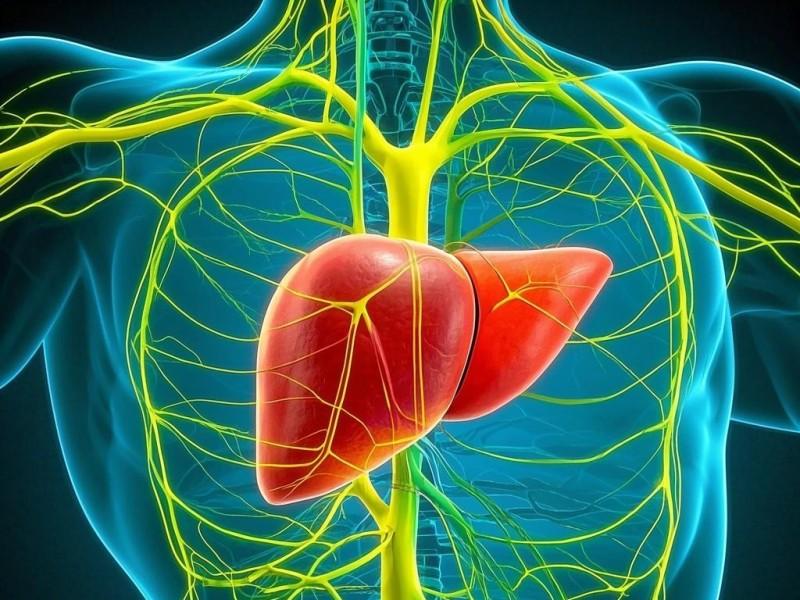
2.9 Other effects on the cardiovascular system
Octacosanol exhibits many unique protective functions for the cardiovascular system. Octacosanol significantly improves cerebral ischemia in mice caused by unilateral or bilateral carotid artery ligation. Administration of octacosanol reduces mortality in mice, reduces tissue edema and neuronal necrosis, and increases cyclic adenosine monophosphate (cAMP) levels [36]. After intervention with octacosanol in mice fed a high-fat diet, the mass of perirenal adipose tissue was significantly reduced, blood triglyceride levels were lowered, fatty acid levels were increased, and the activity of lipoprotein lipase in the perirenal tissue and the total fatty acid oxidation rate in the muscles were enhanced [37]. Inducing myocardial necrosis in mice with isoproterenol, and then administering octacosanol significantly reduced the myocardial infarction area, polymorphonuclear leukocytes and mast cells [38]. In an experiment on arterial wall damage in rabbits, octacosanol was found to reduce arterial endothelial damage and platelet adhesion to the subendothelial membrane [39]. Octacosanol can also reduce the risk of atherosclerosis by inhibiting platelet aggregation [40]. Endothelial dysfunction, lipid deposition and inflammatory response are the main characteristics of atherosclerosis. Human umbilical vein endothelial cells (HUVEC) intervened by octacosanol by regulating the phosphatidylinositol 3-kinase (PI3K)/protein kinase B (Akt) and mitogen-activated protein kinase (MAPK)/extracellular regulated protein kinase (Erk) pathways, increased the phosphorylation levels of Akt and Erk1/2, and significantly increased cell viability and migration [41].
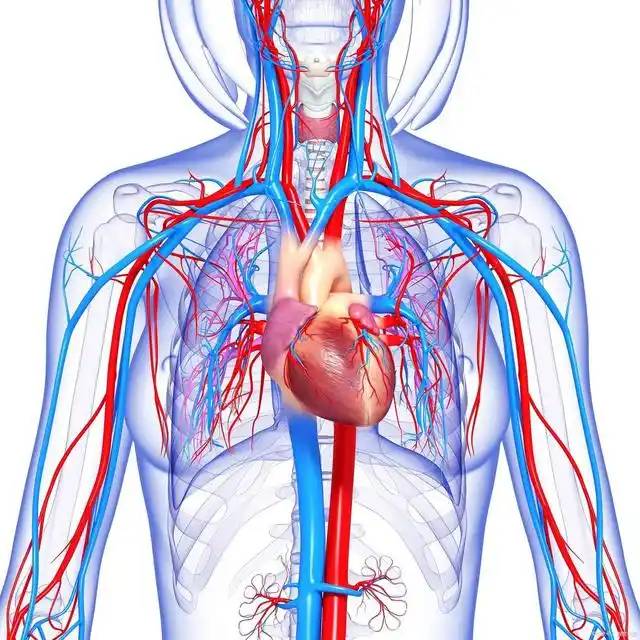
2.10 Effect on Parkinson's disease
After oral administration of octacosanol (35–70 mg/kg) to mice for 14 consecutive days, the behavioral changes associated with Parkinson's disease model mice caused by 6-hydroxydopamine (6-OHDA) can be significantly improved, the free radical scavenging capacity of the striatum in the mouse brain can be enhanced, and neuronal apoptosis can be inhibited. It also significantly inhibits the expression of the proNGF–p75NTR complex, a precursor of nerve growth factor, and downstream related proteins. Octacosanol inhibits the reduction of nerve growth factor (NGF) and related symptoms by regulating the ratio of proNGF:NGF and the related receptor p75NTR:TrkA [42]. A model was established by treating C57BL/6N mice with tetrahydropyridine (MPTP). It was found that oral administration of pristane (100 mg/kg) significantly alleviated the symptoms of nerve toxicity in mice, improved the morphology of neurons in the substantia nigra, and inhibited the phosphorylation of p38MAPK and JNK caused by MPTP treatment [43]. Prilocaine and atorvastatin administered to gerbils after ischemia-reperfusion can reduce neuronal damage in the hippocampal CA1 region [44].
2.11 Effect on inflammation and tumors
Octacosanol has potential anti-inflammatory and anti-tumor effects. In a study on a plant grown in the Amazon basin in Brazil that was used by the locals to treat fever and malaria, it was found that the octacosanol extracted from it had an analgesic and anti-inflammatory effect [45]. When carrageenan was used to induce pleurisy in mice, eicosanol significantly reduced the total white blood cell count and the influx of neutrophils, and also reduced the expression of tumor necrosis factor (TNF–α), indicating that eicosanol can inhibit the signal pathway of related inflammatory factors. A series of studies have shown that angiogenesis is important for tumor growth and metastasis. Octacosanol, extracted from the bile of Bos taurus, can inhibit the proliferation of vascular endothelial cells and Ehrlich ascites tumor cells in vivo, as well as ascites secretion, reduce vascular endothelial growth factor (VEGF) production, weaken the activity of matrix metalloproteinases (MMPs), affect the transfer of transcription factors (NF–κB) into the nucleus and their ability to bind to DNA, thereby exerting its inhibitory effect [46]. Some scholars have found that a mixture of long-chain fatty alcohols (with 7.64% octacosanol) extracted from evening primrose oil can reduce the NO content and the release of phospholipase (PLA2) and thromboxane (TXB2) in peritoneal macrophages of mice induced by lipopolysaccharide (LPS) to produce related inflammatory responses. The expression of cyclooxygenase (COX–2), inflammatory cytokines, interleukin IL–1β, and TNF–α. This indicates that octacosanol may exert an anti-inflammatory effect through the above mechanisms [47].
3 The main mechanism of action of octacosanol
Although there have been many studies on some of the physiological functions of octacosanol, its mechanism of action and molecular mechanism still require further investigation. According to relevant literature reports, octacosanol has many physiological functions, which are inseparable from its effects on many important cellular signal transduction pathways such as AMPK, PI3K/Akt, and MAPK/NF–κB. AMPK is known as the “cell energy regulator”, and its downstream target proteins are mainly related to the regulation of energy metabolism. AMPK exerts important effects on cell growth, aging, apoptosis, the body's metabolism of carbohydrates, lipids, and proteins, and cardiovascular function. An increase in the AMP/ATP ratio in the body activates AMPK, which reduces anabolic and catabolic activities and enhances ATP-producing metabolic activities. AMPK can inhibit lipid synthesis by phosphorylating acetyl-CoA carboxylase (ACC), glycerol phosphate transferase (triglyceride synthesis), and HMG–CoA reductase (cholesterol/isoprenoid synthesis).
AMPK also activates the glucose transporters GLUT–1 and GLUT–4, increasing glucose uptake. Glycolysis is enhanced by phosphorylation of the rate-limiting enzyme PFK. It has been shown that octacosanol can increase the cellular mRNA levels of GLUT–4, GS, StAR, and AMPK, which are associated with the AMPK pathway, and enhance the activity of PFK, SDH, NADH–Tr, and ATPase, thereby affecting energy metabolism [7, 9, 17]. Polyprenol can inhibit the expression of HMG–CoA reductase mRNA in HUVEC and liver cancer cells, induce the phosphorylation of AMPK, and inhibit HMG–CoA synthesis [20–21]. The effect of octacosanol on cardiovascular and energy metabolism is closely related to its regulation of the function of the AMPK pathway.
NF-κB and MAPK are the main signal pathways involved in cellular inflammatory responses. The nuclear factor NF-κB is a family of transcription factor proteins. Under normal circumstances, NF-κB dimers (mainly p50 to p65) bind to inhibitory proteins (IκB) and exist in the cytoplasm. When the cell is stimulated, the membrane receptor is activated, and NF–κB is translocated to the nucleus, where it participates in the transcriptional regulation of genes related to inflammatory mediators. MAPKs are a class of serine and threonine protein kinases in cells. The classic MAPKs family subfamily pathways include p38 mitogen-activated protein kinase (p38MAPK), extracellular regulated protein kinase 1/2 (ERK1/2), and c-Jun amino-terminal kinase (JNK). JNK and ERK are closely related to cell proliferation and apoptosis, and play a very important role in both physiological and pathological processes. Under the stimulation of inflammatory factors and external environmental stimuli, p38MAPK is phosphorylated and activated, which in turn activates nuclear transcription factors and participates in the transcriptional regulation of inflammatory factors and other genes. Literature shows that octacosanol has a significant inhibitory effect on inflammatory responses, which can significantly reduce the expression and release of related inflammatory mediators and pro-inflammatory factors (COX-2, iNOS, IL-1β, TNF-α, etc.), affecting the transfer of NF–κB into the nucleus and its ability to bind to DNA [46–47]. It can also significantly reduce the neurological symptoms of C57BL/6N mice by inhibiting the phosphorylation of p38MAPK and JNK caused by MPTP [43]. Therefore, octacosanol has a strong regulatory effect on the NF–κB/MAPK pathway.
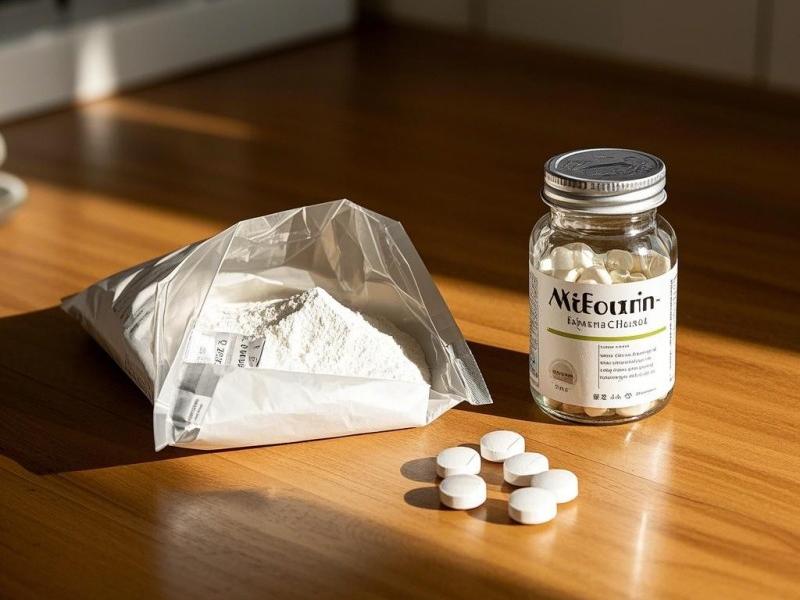
The PI3K/Akt pathway can regulate apoptosis and is involved in the regulation of cell growth, proliferation and differentiation. Overactivation of PI3K can cause cells to become cancerous. The PI3K/Akt signaling pathway is also cross-linked with the NF–κB/MAPK signaling pathway. Studies have found that octacosanol can intervene in the PI3K/Akt and MAPK/Erk pathways in HUVEC, increase the phosphorylation levels of Akt and Erk1/2, and significantly enhance cell viability and migration [41].
In summary, octacosanol can affect cell signaling pathways such as AMPK, NF–κB/MAPK, and PI3K/Akt, thereby exerting a variety of physiological functions. Further research into the potential targets of the action of octacosanol can more effectively explore its molecular mechanism of regulating cell signal pathways. In addition, the role of octacosanol in signal pathways can also be used to explore more of its potential physiological functions.
4 Conclusion
Numerous studies have shown that octacosanol is a natural substance with many significant physiological functions and is also very safe. At present, many achievements have been made in the extraction of octacosanol, the production of functional foods, medicine, cosmetics, and feed, both domestically and abroad, and the market application prospects are very broad. China has a wealth of natural raw materials for the extraction of octacosanol, which has created favorable conditions for the full development of octacosanol. With people's growing health awareness and continuous progress in science and technology, it is necessary to conduct more in-depth research on the physiological functions and molecular mechanisms of octacosanol, improve industrial development, and give full play to its potential characteristics.
References
[1] Li Jun, Yuan Desheng. Research progress of octacosanol [J]. China Chemical Industry Trade, 2012 (6): 175–183.
[2] GAO W, LIU D, SU S. High–performance thin–layer chromatography for quantification of 1–octacosanol in Antarctic krill (Euphausia superba Dana) [J]. J. Chromatogr. Sci., 2015, 53(5): 811–815.
[3] Cao Ziran, Li Liping, Xu Yueqing, et al. Effects of octacosanol on immune function and swimming endurance in laboratory animals [J]. Food Science, 2004, 25(7): 158–160.
[4] Zhou M. Preparation of octacosanol from beeswax and its anti-fatigue and anti-hypoxia functions [D]. Chongqing: Southwest University, 2006.
[5] Zhong G, Wei Y. Study on the function of octacosanol-containing oil capsules in relieving physical fatigue and lowering blood lipids [J]. Chinese Journal of Cereals, Oils and Foodstuffs, 2006, 21(5): 89–92.
[6] Chen Fang. Study on the extraction and purification of octacosanol from rice bran and its anti-fatigue function [D]. Beijing: China Agricultural University, 2003.
[7] Yang Hao. Study on the preparation of octacosanol and its effect and mechanism on energy metabolism [D]. Changsha: Changsha University of Science and Technology, 2012.
[8] Chen Fang, Zhao Guanghua, Tian Ze, et al. Research on the anti-fatigue effect of octacosanol extract [J]. Journal of Nutrition, 2006, 28 (3): 269–270.
[9] Huo J S, Han Y S, Shi J P, et al. Effect of octacosanol on energy metabolism in mouse heart and skeletal muscle [J]. Journal of China Agricultural University, 1996, 1 (3): 5–7.
[10] Yang Xiaoying, Liu Huagang, Lin Jingsong, et al. Study on the effects of octacosanol preparations on the biochemical and myocardial antioxidant indices of rats with exercise fatigue [J]. Shanxi Medical Journal, 2008, 38(7): 273–275.
[11] Yang Xiaoying, Liu Huagang, Lin Jingsong, et al. Effects of octacosanol preparations on free radical metabolism and cardiac endocrine function in rats with exercise fatigue [J]. Journal of Southern Medical University, 2008, 28(4): 653–657.
[12] Chen Fang, Zhao Guanghua, Cai Tongyi, et al. Effects of octacosanol on the behavior and neuroendocrine indicators of rats subjected to forced cold water stress [J]. Journal of Nutrition, 2007, 29 (4): 408–410.
[13] Lu Guoshou, Liu Fuyu, Gao Yuqi, et al. Experimental study on the preventive effect of octacosanol on cyanide poisoning in mice with acute hypoxia [J]. Southwest National Defense Medicine, 2008, 18 (2): 163–164.
[14] Liu Fuyu, Wang Kunping, Luo Yongjun, et al. A preliminary study on the protective effect of octacosanol on rats with hypoxia [J]. Southwest National Defense Medicine, 2010, 20 (6): 649–651.
[15] Hui J. Preliminary study on the anti-hypoxia effect of octacosanol [D]. Chongqing: Third Military Medical University, 2007.
[16] Yu C. Study on the anti-mitochondrial damage of octacosanol in rat heart [J]. China Food Additives, 2003 (2): 35–37.
[17] Xiang Yang, Yang Hao, Wu Xin, et al. Research and application progress of octacosanol in regulating energy metabolism in the body [J]. Journal of Xinxiang University, 2012, 29(1): 44–46.
[18] Yang Wei. Research on the mechanism of action of beeswax in reducing plasma cholesterol [D]. Zhanjiang: Guangdong Medical College, 2007.
[19]SINGH D K,LI L,PORTER T D . Policosanol inhibits cholesterol synthesis in hepatoma cells by activation of AMP– kinase [J]. J. Pharmacol. Exp. Ther.,2006,318(3): 1020–1026. [20]OLIARO–BOSSO S,CALCIO G E,MANTEGNA S,et al.
Regulation of HMGCoA reductase activity by policosanol and octacosadienol,a new synthetic analogue of octacosanol [J]. Lipids,2009,44(10):907–916.
[21]BANERJEE S,GHOSHAL S,PORTER T D. Activation of AMP–kinase by policosanol requires peroxisomal metabolism [J]. Lipids,2011,46(4):311–321.
[22]MARAZZI G,CACCIOTTI L,PELLICCIA F,et al. Long–term effects of nutraceuticals(berberine,red yeast rice,policosanol) in elderly hypercholesterolemic patients [J]. Adv. Ther.,2011,28(12): 1105–1113.
[23]GUARDAMAGNA O,ABELLO F,BARACCO V,et al. The treatment of hypercholesterolemic children:Efficacy and safety of a combination of red yeast rice extract and policosanols [J].
Nutr. Metab. Cardiovasc. Dis.,2011,21(6):424–429.
[24]MARAZZI G,PELLICCIA F,CAMPOLONGO G,et al.Usefulness of nutraceuticals(armolipid plus)versus ezetimibe and combination in statin–intolerant patients with dyslipidemia with coronary heart disease [J]. Am. J. Cardiol.,2015,116(12): 1798–1801.
[25]MAZZA A,LENTI S,SCHIAVON L,et al. Nutraceuticals for serum lipid and blood pressure control in hypertensive and hypercholesterolemic subjects at low cardiovascular risk [J]. Adv. Ther.,2015,32(7):680–690.
[26]TRIMARCO V,IZZO R,STABILE E,et al. Effects of a new combination of nutraceuticals with Morus alba on lipid profile, insulin sensitivity and endotelial function in dyslipidemic subjects. A cross–over,randomized,double–blind trial [J]. High Blood Press Cardiovasc. Prev.,2015,22(2): 149–154.
[27]LEE E Y,YOO J A,LIM S M,et al. Anti–aging and tissue regeneration ability of policosanol along with lipid–lowering effect in hyperlipidemic zebrafish via enhancement of high– density lipoprotein functionality [J]. Rejuvenation Res.,2016,19 (2):149–158.
[28]LIM S M,YOO J A,LEE E Y,et al. Enhancement of high– density lipoprotein cholesterol functions by encapsulation of policosanol exerts anti–senescence and tissue regeneration effects via improvement of anti–glycation,anti–apoptosis,and cholesteryl ester transfer inhibition [J]. Rejuvenation Res.,2016, 19(1):59–70.
[29]TANG M,WU S Z,GONG X . Effects of policosanol combined with simvastatin on serum lipids and sex hormones in male patients with hyperlipidemia [J]. Chinese Journal of Cardiovascular Diseases,2013,41(6):488–492.
[30] Li Shaoying. Effect of taking octacosanol on the immune function of cyclists [D]. Jinan: Shandong Normal University, 2007.
[31]KAUP R M,KHAYYAL M T,VERSPOHL E J. Antidiabetic effects of a standardized Egyptian rice bran extract [J]. Phytother. Res.,2013,27(2):264–271.
[32]AFFUSO F,MERCURIO V,RUVOLO A,et al. A nutraceutical combination improves insulin sensitivity in patients with metabolic syndrome [J]. World J. Cardiol.,2012,4(3):77–83.
[33]CASTAÑOG,MENÉNDEZ R,MÁSR,et al. Effects of policosanol and lovastatin on lipid profile and lipid peroxidation in patients with dyslipidemia associated with type 2 diabetes mellitus [J]. Int. J. Clin. Pharmacol. Res.,2002,22(3/4):89–99.
[34]OHTA Y,OHASHI K,MATSURA T,et al. Octacosanol attenuates disrupted hepatic reactive oxygen species metabolism associated with acute liver injury progression in rats intoxicated with carbon tetrachloride [J]. J. Clin. Biochem. Nutr.,2008,42(2): 118–125.
[35]NOA M,MENDOZA S,MÁS R,et al. Effect of policosanol on carbon tetrachloride–induced acute liver damage in Sprague– Dawley rats [J]. Drugs in R&D,2003,4(1):29–35.
[36]MOLINA V,ARRUZAZABALA M L,CARBAJAL D,et al. Effect of policosanol on cerebral ischemia in Mongolian gerbils [J]. Braz. J. Med. Biol. Res.,1999,32(10): 1269–1276.
[37]KATO S,KARINO K,HASEGAWA S. Octacosanol affects lipid metabolism in rats fed on a high–fat diet [J]. Br. J. Nutr., 1995,73(3):433–441.
[38]NOA M,HERRERA M,MAGRANER J,et al. Effect of policosanol on isoprenaline–induced myocardial necrosis in rats [J]. J. Pharm. Pharmacol.,1994,46(4):282–285.
[39]NOA M,MÁS R,LARIOT C. Protective effect of policosanol on endothelium and intimal thickness induced by forceps in rabbits [J]. J. Med. Food,2007,10(3):452–459.
[40]VARADY K A,WANG Y,JONES P J H. Role of policosanols in the prevention and treatment of cardiovascular disesase [J]. Nutr. Rev.,2003,61(11):376–383.
[41]LIU Y W,ZUO P Y,ZHA X N,et al. Octacosanol enhances the proliferation and migration of human umbilical vein endothelial cells via activation of the PI3K/Akt and MAPK/Erk pathways [J]. Lipids,2015,50(3):241–251.
[42]WANG T,LIU Y Y,WANG X,et al. Protective effects of octacosanol on 6–hydroxydopamine–induced Parkinsonism in rats via regulation of ProNGF and NGF signaling [J]. Acta. Pharmacologica. Sinica.,2010,31(7):765–774.
[43]WANG T,LIU Y,YANG N,et al. Anti–parkinsonian effects of octacosanolin 1–methyl–4–phenyl–1,2,3,6 tetrahydropyridine– treated mice [J]. Neural. Regen. Res.,2012,7(14): 1080–1087.
[44]MOLINA V,RAVELO Y,NOA M,et al. Therapeutic effects of policosanol and atorvastatin against global brain ischaemia– reperfusion injury in gerbils [J]. Indian J. Pharm. Sci.,2013,75 (6):635–641.
[45]DE OLIVEIRA A M,CONSERVA L M,DE SOUZA FERRO J N,et al. Antinociceptive and anti–inflammatory effects of octacosanol from the leaves of Sabicea grisea var. grisea in mice [J].
Int. J. Mol. Sci.,2012(13): 1598–1611.
[46]THIPPESWAMY G,SHEELA M L,SALIMATH B P .Octacosanol isolated from Tinospora cordifolia downregulates VEGF gene expression by inhibiting nuclear translocation of NF–kappaBandits DNA binding activity [J]. Eur. J. Pharmacol., 2008,588(2/3): 141–150.
[47]MONTSERRAT–DE L P S,GARC ĺA–GIMÉNEZ M D, ÁNGEL–MARTĺN M,et al. Long–chain fatty alcohols from evening primrose oil inhibit the inflammatory response in murine peritoneal macrophages [J]. J. Ethnopharmacol.,2014,151(1): 131–136.


 English
English French
French Spanish
Spanish Russian
Russian Korean
Korean Japanese
Japanese